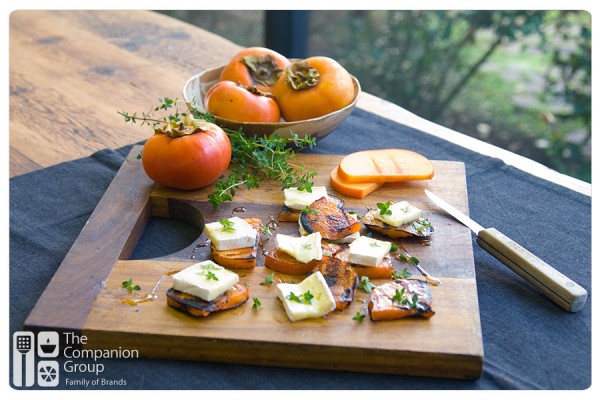An Ode to Grilled Cheese
One of my favorite things to eat is cheese, an ingredient that has no trouble being the feature flavor of a dish or meal. There are over 900 known cheeses in the world – each with its own size, shape, color, and aroma. Recently I had the opportunity to grill several different types of cheese, each using a different method. I’d like to share with you some great new ways to serve cheese fresh off of the grill!

Brie, Camembert, and Raclette all share one thing in-common: they all taste amazing cooked on the grill. Each cheese has its own special flavor profile from creamy and nutty, to firm and acidic. After being cooked on the grill, they pick up a pleasantly smoky aroma that pairs well with most cheese varieties. There’s more than one way to do grilled cheese, and we aren’t talking about the sandwich. Today I’ll show you how to do fondue, baked Brie, planked cheeses, and we’ll also discuss the Raclette process.
Fondue on the Grill
I always tell people that grilling is one of the most flavorful and simple ways to cook vegetables. Green vegetables like asparagus and zucchini pick up smoky notes that intertwine with their naturally earthy flavors. Sweet vegetables like red onion, bell peppers, and carrots also taste amazing when cooked on a sizzling, smoky grill. So what’s the only thing that could improve a grilled vegetable? Why, cheese of course!
Cooking your fondue on the grill isn’t just a chance to show your grill mastery. It’s a great way to impart flavor and present your appetizer. To make fondue on the grill you’ll need to pick up a grill fondue set or at the least a grill grid, wok or basket, and a sturdy sauce pot. Without these tools, you’re limited to vegetables that won’t fall through the grill grate. Stock up on some extra veggies, pick out a nice selection of cured meats, and you’ve got dinner in a few simple steps.

Recipe for Brie Fondue
Ingredients
- 2 cloves garlic, crushed
- ¾ C. dry white wine (La Crema is preferred)
- 1 tsp. sherry
- ½ lb. Triple Cream Brie, rind removed and cubed
- 2 tsp. cornstarch or 3 ½ tsp. arrowroot
- Pinch white pepper
Instructions
- Crush garlic and rub around the inside of a small sized, heavy bottom sauce pot.
- Leave the garlic in the pot and add the wine and sherry and heat until just bubbling on high heat. After wine begins to bubble, turn heat down to medium low.
- Roll cubed cheese in cornstarch.
- Begin adding brie cubes, stirring constantly to avoid scorching. As cubes melt, continue adding until all cheese is incorporated.
- Add fresh thyme and pepper.
- Taste fondue and add salt if needed. If the fondue is too loose, add more cheese rolled in cornstarch.
Raclette
If fondue had a backwards cousin it would be Raclette! Put simply, Raclette is very similar to fondue, but instead of liquefying the cheese by mixing it with wine, slices are cut and the cheese is melted then drizzled over grilled vegetables and meat. Traditionally served raclette is melted in a different manner: the entire wheel is cut in half and placed upright underneath a broiler. When the wheel’s surface becomes melted enough, cheese is scraped directly off of the wheel and onto food with a knife.
There are a few options for making Raclette at home. The first option is to buy a pricy raclette griddle, a small electric griddle for cooking ingredients and melting the cheese at the table. The second option, my personal favorite, is to grill the vegetables and the cheese together on a gas or charcoal grill using a raclette pan. Assuming you already have a grill, buying a raclette pan is much cheaper option than buying an entire appliance. Plus, on the grill Raclette picks up that great smoky flavor we all love. Simply grill some of your vegetables, slice up a stack of raclette cheese, place the cheese into the pan, cook until melted, then scrape the melted cheese onto your veggies.
Baked Brie and Planked Cheeses
Cooking a planked cheese is as simple as it gets. Wood planks are soaked 30-45 minutes before being used, then cheese is placed on the plank and cooked for about 20-25 minutes at 400°F. In addition to being simple, wood planks are very affordable and impart subtle, but distinct wood tones. Planks come in different flavors to accompany sweet or savory toppings; the choice is yours.
Cooking with a brie baker is equally as simple as planking and produces similar results, but without the wood flavor infused into the cheese. Crate & Barrel sells a brie baker that’s made from cast iron, which keeps the cheese warm and bubbly even after you take it off the grill. Baked Brie tastes amazing topped with various fruits like figs, apples, and pears. Combine your favorite fruit with your favorite nut (almonds and pecans will work just fine) and raw honey for a beautiful, delicious appetizer.
Salt Baked Cheese
Last but not least, we’ve got one more technique worth mentioning, grill-baked cheese on a Himalayan salt plate. Himalayan salt plates are not only beautiful, but also impart salt content and nutritious trace minerals to your food. The main difference in using a salt plate is the need to preheat it in stages (200-250°F for 20-30 minutes) so you don’t run the risk of cracking it. Take a look at our salt plate blog to learn more about these amazing, ancient pieces of salt.






No comments yet.